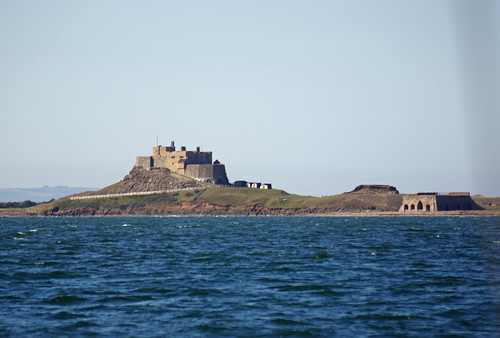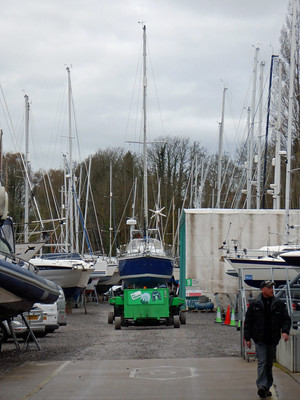A cold and disappointing day, the inshore forecast indicated east to north east winds F3-4 which would have been fine but when I left it was west of north and by lunch time, when the updated forecast was still saying E - NE, it was still closer to north than north east. In the very constricted waters of the Thames Estuary that meant using the engine.
 |
| The Long Sands Two Way Route and surrounding waters. |
The Thames Estuary has lots of sandbanks, windfarms and shipping routes, just off the screen shot above there is even a roundabout for shipping! In the centre of the shot is a narrow, 11 mile long, "2 way" route for small craft (boats less than 20 metres in length) each of the two lanes is less than a mile wide so beating up them against the wind is not really practical single handed with a big headsail - it would take forever and I would have been exhausted well before getting through.
To complicate matters on this trip there was fog, with visibility ranging from about a mile to half a mile for most of the morning with a few denser patches. 40 years ago without electronic aids the passage would have been very tense for the navigator finding the way and for the skipper and lookouts trying to avoid shipping, it would probably not be attempted if the fog was forecast, especially single handed.
Today things are much easier:
 |
Sancerre's instruments are in the cockpit were I can see them.
Top left the chart plotter / multi function display, top right
the control for the autopilot displaying the boats head from
an electronic compass and below the VHF transceiver. |
On the main instrument the left half of the screen is showing the chart, the boats position and planned track. The right half is showing the doppler radar output. Both sides include transponder returns from AIS (Automatic Identification System) equipped vessels which is mandatorily for all large ships, passenger vessels and is optional for small ones such as Sancerre, the little green mark on the radar screen west of Sancerre is one such return, IIRC a fishing boat.
The sharp eyed with a big monitor might spot a bit of blue mixed with the green on the right hand section, that is the radar return. The yellow arrow on the left hand section indicates the direction of the tide, tapping on it will give the rate.
AIS shows the vessels position, track, speed etc. and the system automatically calculates a closest point of approach and will set off an alarm if that is within specified limits. The radar also has an alarm function and should show most vessels and is also useful for navigation, showing land, radar reflectors on buoys etc., but it does take practice to interpret.
 |
The area shaded red is the "guard zone" any radar return in the
area will trigger an alarm, unfortunately it frequently false alarms
so it is not that useful if you want to sleep. Pic from the next leg. |
 |
My back up, an iPad with GPS, a full set of Admiralty UK Charts
and a WiFi link to the AIS unit to show all AIS equipped vessels
in the area. Both pics taken at the southern end of the 2 Way route. |
There is something about the "Sunk" Deep Water anchorage just north of the 2 Way route, this year as last my planned track went straight through a couple of anchored ships and I had to make detours.
 |
The deep Water Anchorage in clearing fog, 6 hours into my trip.
Left to its own devices the auto pilot would have taken me
straight into the stern of the left hand ship. |
 |
I moored in front of this very expensive yacht, I was told that it
was impounded last week as it had 8 illegal immigrants on board,
presumably a luxury service. They were obviously trying to
sneek them in (look carefully  ). ).
|
74.6 nautical miles over the ground in 15 hours. Winds 5 - 11 knots on the nose.
Some bad weather is on the way with more cold north easterlies this time possibly F5-6 so I may be here fore a few days.
Click here for Days 8 & 9. Lowestoft - Filey.







































